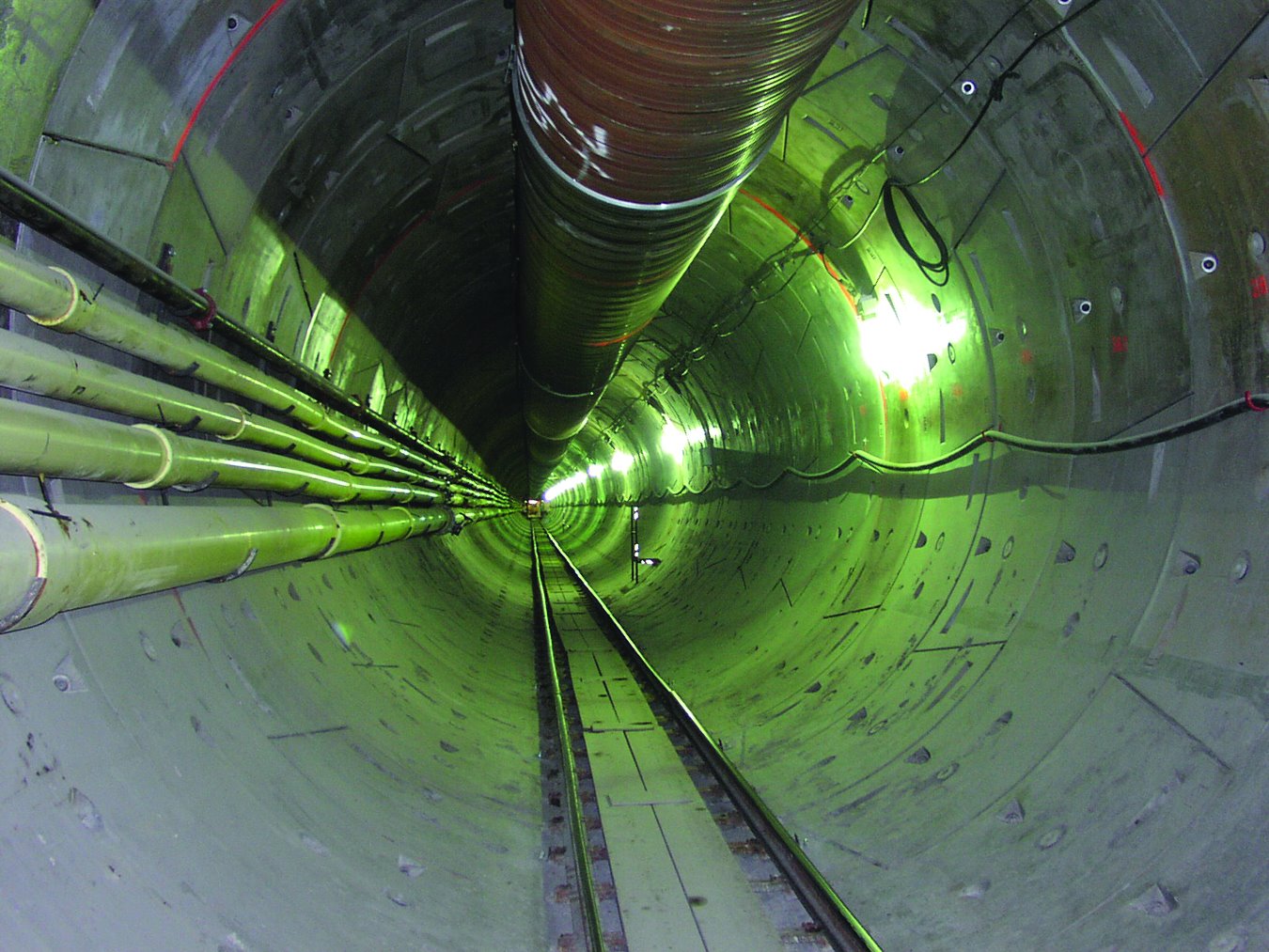Opportunity
The Inland Feeder system was designed to help meet the growing water demands of Southern California. (See video.) When large volumes of water are available from the north of the state, the Inland Feeder allows excess water to be stored for use during dry spells and emergencies. Northern California water can be blended with Colorado River water, which has a higher mineral content, to ensure better overall quality.
The Inland Feeder stretches from Silverwood Lake in the foothills of the San Bernardino Mountains 44 miles (71 kilometers) southeast to Diamond Valley Lake. It includes 26 miles (42 kilometers) of buried pipeline and three large tunnels totaling 18 miles (29 kilometers): Arrowhead West, Arrowhead East, and the Riverside Badlands Tunnel.
The Arrowhead West tunnel was bored through water-bearing layers of granite and metamorphic rock, at depths of up to 1,100 feet (335 meters) and crossing branches of the San Andreas Fault and Arrowhead Springs Fault. Both of the Arrowhead tunnels were required to meet stringent US Forest Service restrictions on the inflow of groundwater.
Solution
The Arrowhead tunnels were bored using twin tunnel boring machines (TBMs) customized using a hybrid design by the German manufacturer Herrenknecht. Mott MacDonald designed and developed probe drilling projection computer models and an early warning detection system to detect strain on the shields of the TBMs.
The Arrowhead West tunnel, the more difficult of the two, took four years to bore. In faulted areas, blocks of rock were broken into fine debris and treated with grout before tunneling could safely proceed. At one point, a flash flood temporarily submerged the TBM.
Precast bolted gasketed segments were designed to keep the tunnels watertight. The segments were capable to handle more than 900 feet (274 meters) of external head, the highest head in the industry at the time.
During placement of the cellular concrete backfill around the final liner, which was 12 feet (3.6 meters) in internal diameter, the subcontractor achieved a world record by pumping the cellular grout 3.8 miles (6.1 kilometers) through a 5-inch (13-cm) steel slickline.
In 2008, the TBM crossed five significant fault and shear zones in the last 1,500 feet (457 meters) of the tunnel. Concrete and steel foundation pads were used to support the cutterhead while crossing a forty-foot fault (12-meter) zone of weak rock.
Outcome
The project was completed $14 million under its revised 2006 budget, and one year ahead of the schedule set out in the 2006 modified contract. About 90 days were saved by redesigning the height of the tunnel access vault at Waterman Portal, and by redesigning the grading and drainage at the three other portal sites.
By studying alternative routes, Mott MacDonald's Construction Management team avoided major problems posed by hauling pipe through the city of San Bernardino.
To reduce environmental impact, the contractor salvaged steel and other metal scraps from the tunneling and pipe installation. Timbers and planks used on the project were recycled into building stock for outdoor furniture. Tunnel muck was recycled in the local community as landfill cover, embankments in storm debris basins, and in foundations for roads, bridges, parking lots, and building developments.
Innovative technical solutions devised to cope with the project’s extreme conditions are now being used in the creation of new tunnels.




